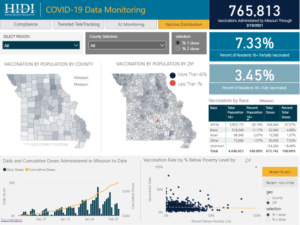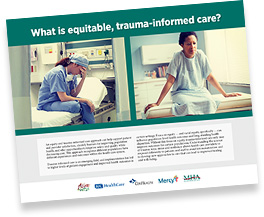
Staff Contact: Mat Reidhead
The Hospital Industry Data Institute is pleased to announce the availability of a new COVID-19 vaccine dashboard through HIDI Analytic Advantage. This addition to the secure, hospital-specific suite of COVID-19-related dashboards is designed to assist hospitals in monitoring vaccine coverage in their primary service areas.
Using key information on community composition and recipient demographics, the dashboard is intended to assist users in evaluating uptake among socially vulnerable and vaccine-hesitant populations in Missouri. Vaccine coverage data are presented in terms of partial and full inoculation at the state, regional, county and ZIP code levels alongside key indicators, such as the portion of the population living below poverty, and nonwhite populations as an indicator of equity in access and vaccine acceptance.
The dashboards are available for download to authorized users of HIDI Analytic Advantage. If you need a user ID and password, or have questions about accessing these dashboards, please contact HIDI.











